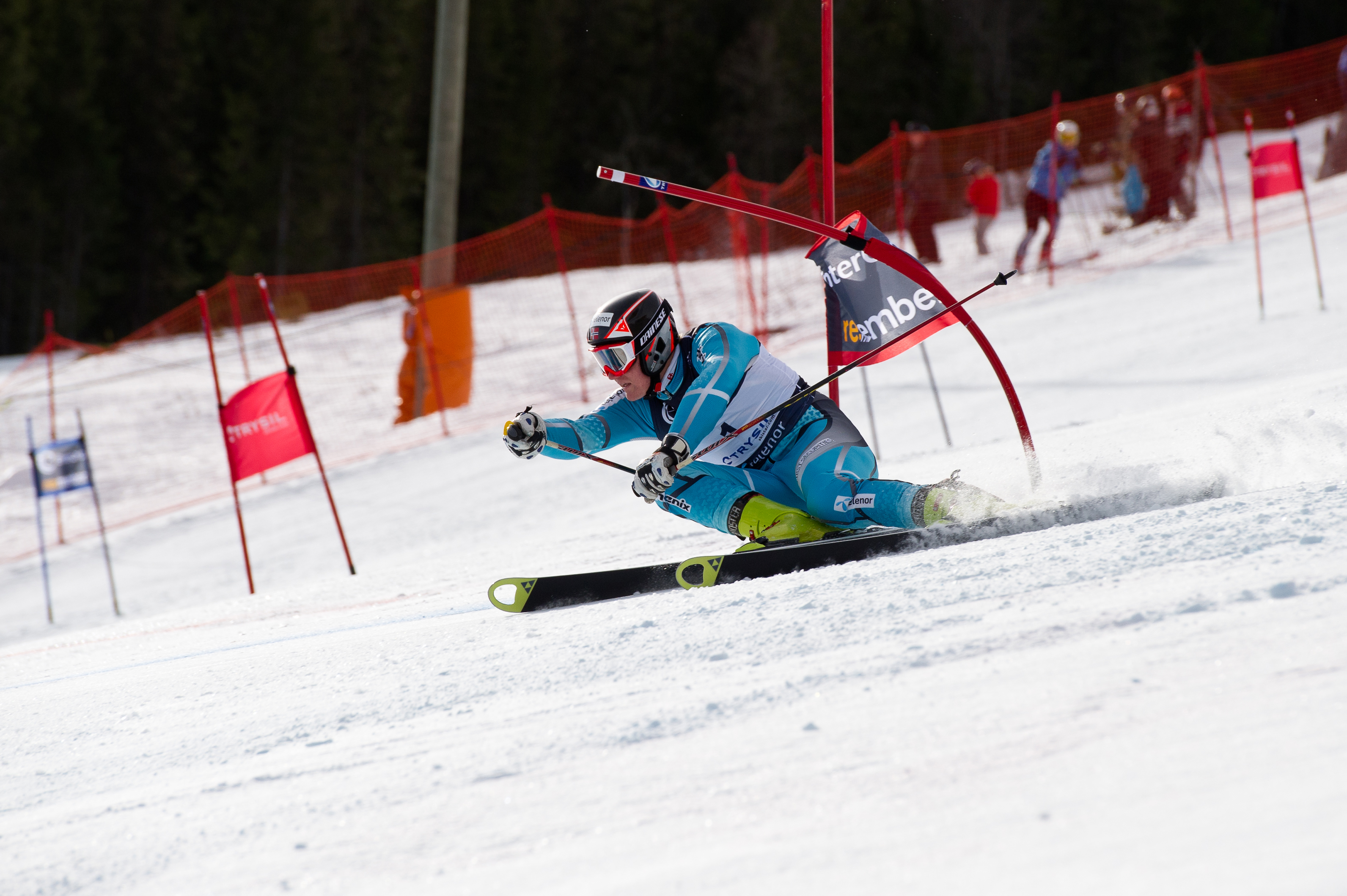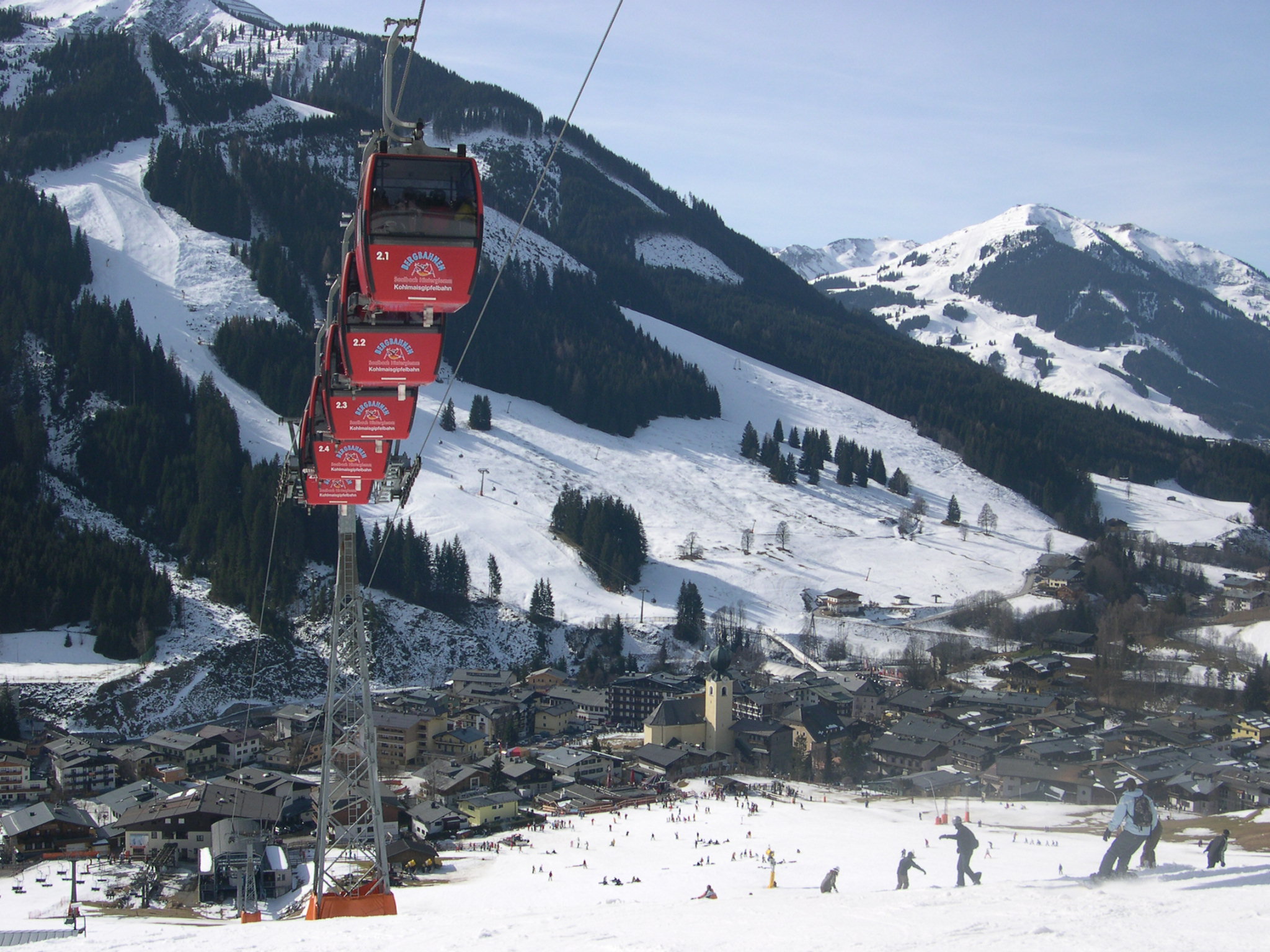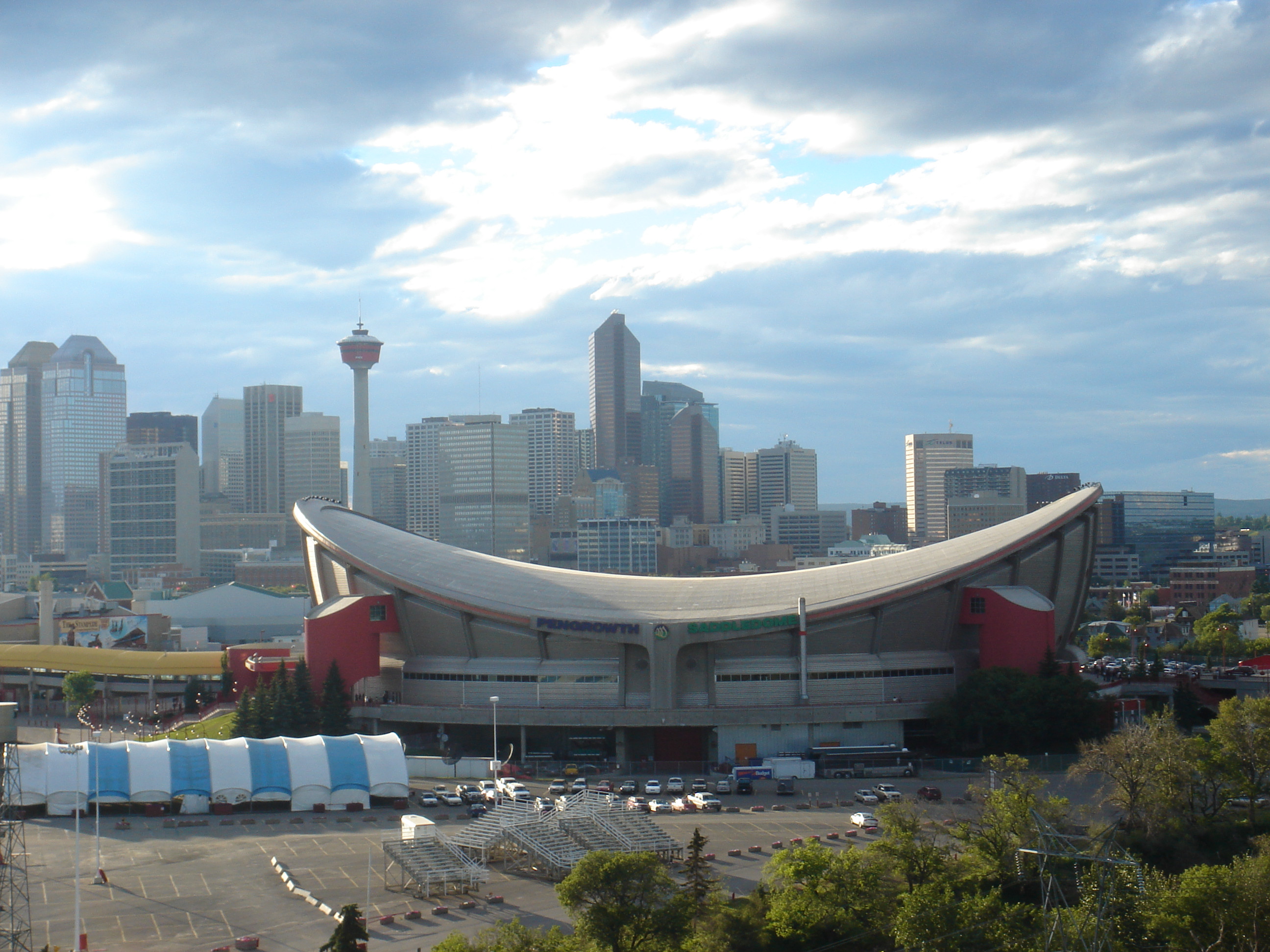|
Bojan Križaj
Bojan Križaj () (born 3 January 1957) is a Slovenian former alpine skier. During his international career he competed for the then-existing Yugoslavia. He competed at three Winter Olympics. Career Križaj, born in Kranj, was a member of a well known Tržič ski family so he started skiing at the age of 3. In the season 1976/77 he received the first World Cup point, qualified among the 15 best slalom runners and later during that season in Madonna di Campiglio he hit his first top 3 podium. On 20 January 1980 he achieved the first Yugoslav World Cup victory in Wengen, Switzerland and later he won seven more times, thus still being Yugoslavia's and Slovenia's most successful male alpine skier to date. At 1980 Winter Olympics in Lake Placid, New York, U.S., he reached the fourth place in giant slalom, missing the bronze medal by only two hundredths of a second. Four years later he took the athlete's oath at the opening ceremony for Sarajevo's 1984 Winter Olympics. He caused ... [...More Info...] [...Related Items...] OR: [Wikipedia] [Google] [Baidu] |
Giant Slalom
Giant slalom (GS) is an alpine skiing and alpine snowboarding competitive discipline. It involves racing between sets of poles ("gates") spaced at a greater distance from each other than in Slalom skiing, slalom but less than in Super-G. Giant slalom and slalom make up the technical events in alpine ski racing. This category separates them from the speed events of Super-G and Downhill (ski competition), downhill. The technical events are normally composed of two runs, held on different courses on the same ski run. Course The vertical drop for a GS course must be for men, and for women. The number of gates in this event is 56–70 for men and 46–58 for women. The number of direction changes in a GS course equals 11–15% of the vertical drop of the course in metres, 13–18% for children. As an example, a course with a vertical drop of would have 33–45 direction changes for an adult race. Speed Although giant slalom is not the fastest event in skiing, on average a well-t ... [...More Info...] [...Related Items...] OR: [Wikipedia] [Google] [Baidu] |
United States
The United States of America (USA), also known as the United States (U.S.) or America, is a country primarily located in North America. It is a federal republic of 50 U.S. state, states and a federal capital district, Washington, D.C. The 48 contiguous states border Canada to the north and Mexico to the south, with the semi-exclave of Alaska in the northwest and the archipelago of Hawaii in the Pacific Ocean. The United States asserts sovereignty over five Territories of the United States, major island territories and United States Minor Outlying Islands, various uninhabited islands in Oceania and the Caribbean. It is a megadiverse country, with the world's List of countries and dependencies by area, third-largest land area and List of countries and dependencies by population, third-largest population, exceeding 340 million. Its three Metropolitan statistical areas by population, largest metropolitan areas are New York metropolitan area, New York, Greater Los Angeles, Los Angel ... [...More Info...] [...Related Items...] OR: [Wikipedia] [Google] [Baidu] |
Saalbach-Hinterglemm
Saalbach-Hinterglemm is a municipality in the district of Zell am See (district), Zell am See (Pinzgau region), in the Austrian States of Austria, state of Salzburg (state), Salzburg. It is well known for its skiing and other winter sports. A four-piste network consisting of Saalbach, Hinterglemm, Fieberbrunn and Leogang is located in the municipality, adding up to of ski slopes. It is short transfer to resort from Salzburg Airport. Geography Saalbach-Hinterglemm is in the Zell am See (district), Pinzgau region, in the Saalbach Valley, which is oriented east–west. The region is part of the Kitzbüheler Alpen. The highest point is Spielberghorn () in the north and Hochkogel () in the south. The nearest larger town is Zell am See, about away. The municipality consists of two small towns: Saalbach and Hinterglemm, which each make up several ''Katastralgemeinden''. History The oldest evidence of settlements in the municipality stems from 1222. The name ''Salpach'' first show ... [...More Info...] [...Related Items...] OR: [Wikipedia] [Google] [Baidu] |
Pirmin Zurbriggen
Pirmin Zurbriggen (born 4 February 1963) is a former FIS Alpine Ski World Cup, World Cup Alpine skiing, alpine ski racer from Switzerland. One of the most successful ski racers ever, he won the overall World Cup title four times, an Alpine skiing at the Winter Olympics, Olympic gold medal in Alpine skiing at the 1988 Winter Olympics, 1988 in Downhill (ski competition), Downhill, and nine FIS Alpine World Ski Championships, World Championships medals (4 gold, 4 silver, 1 bronze). Biography Zurbriggen was born in Saas-Almagell in the canton of Valais, the son of Alois, an innkeeper, and Ida. His father competed as a ski racer in local competitions in the 1940s and 1950s, but quit the sport after his brother was killed in a training accident. Zurbriggen made his World Cup debut in January 1981, a month before his 18th birthday. With his victory in the downhill at Kitzbühel in January 1985 Alpine Skiing World Cup, 1985 at age 21, he became the first to win World Cup races in all five ... [...More Info...] [...Related Items...] OR: [Wikipedia] [Google] [Baidu] |
Austria
Austria, formally the Republic of Austria, is a landlocked country in Central Europe, lying in the Eastern Alps. It is a federation of nine Federal states of Austria, states, of which the capital Vienna is the List of largest cities in Austria, most populous city and state. Austria is bordered by Germany to the northwest, the Czech Republic to the north, Slovakia to the northeast, Hungary to the east, Slovenia and Italy to the south, and Switzerland and Liechtenstein to the west. The country occupies an area of and has Austrians, a population of around 9 million. The area of today's Austria has been inhabited since at least the Paleolithic, Paleolithic period. Around 400 BC, it was inhabited by the Celts and then annexed by the Roman Empire, Romans in the late 1st century BC. Christianization in the region began in the 4th and 5th centuries, during the late Western Roman Empire, Roman period, followed by the arrival of numerous Germanic tribes during the Migration Period. A ... [...More Info...] [...Related Items...] OR: [Wikipedia] [Google] [Baidu] |
Schladming
Schladming () is a small former mining town in the northwest of the Austrian state of Styria that is now a popular tourist destination. It has become a large winter-sports resort and has held various skiing competitions, including most notably the FIS Alpine World Ski Championships 1982 and the FIS Alpine World Ski Championships 2013. The shopping area has many cafes and restaurants, and a variety of shops that cater to tourists. Population Recreation Winter sports The local peak for winter sports is the Planai. A ten-seater cable car with a middle station takes tourists up the mountain. The Planai consists of many red and black slopes for competitive skiers, and many blue slopes for beginners, but generally the Planai is an intermediate to expert mountain. The Hochwurzen is the other mountain in Schladming. It has three main red runs off the four-man chair lift and a sledge run. This mountain is better suited to more experienced boarders and skiers. Also, There is a new 8 man ... [...More Info...] [...Related Items...] OR: [Wikipedia] [Google] [Baidu] |
Canada
Canada is a country in North America. Its Provinces and territories of Canada, ten provinces and three territories extend from the Atlantic Ocean to the Pacific Ocean and northward into the Arctic Ocean, making it the world's List of countries and dependencies by area, second-largest country by total area, with the List of countries by length of coastline, world's longest coastline. Its Canada–United States border, border with the United States is the world's longest international land border. The country is characterized by a wide range of both Temperature in Canada, meteorologic and Geography of Canada, geological regions. With Population of Canada, a population of over 41million people, it has widely varying population densities, with the majority residing in List of the largest population centres in Canada, urban areas and large areas of the country being sparsely populated. Canada's capital is Ottawa and List of census metropolitan areas and agglomerations in Canada, ... [...More Info...] [...Related Items...] OR: [Wikipedia] [Google] [Baidu] |
Calgary
Calgary () is a major city in the Canadian province of Alberta. As of 2021, the city proper had a population of 1,306,784 and a metropolitan population of 1,481,806 making it the third-largest city and fifth-largest metropolitan area in Canada. Calgary is at the confluence of the Bow River and the Elbow River in the southwest of the province, in the transitional area between the Rocky Mountain Foothills and the Canadian Prairies, about east of the front ranges of the Canadian Rockies, roughly south of the provincial capital of Edmonton and approximately north of the Canada–United States border. The city anchors the south end of the Statistics Canada-defined urban area, the Calgary–Edmonton Corridor. Calgary's economy includes activity in many sectors: energy; financial services; film and television; transportation and logistics; technology; manufacturing; aerospace; health and wellness; retail; and tourism. The Calgary Metropolitan Region is home to Canada' ... [...More Info...] [...Related Items...] OR: [Wikipedia] [Google] [Baidu] |
1988 Winter Olympics
The 1988 Winter Olympics, officially known as the XV Olympic Winter Games () and commonly known as Calgary 1988 were a multi-sport event held from February 13 to 28, 1988, with Calgary, Calgary, Alberta as the main host city. This marks the most recent time that two consecutive Olympic Games were hosted in North America (with the 1984 Summer Olympic Games hosted in Los Angeles, California, United States). It was the first Winter Olympic Games to be held for 15 days, like the counterpart Summer Olympic Games. The majority of the events took place in Calgary itself. However, the snow events were shared by Nakiska ski resort in Kananaskis Country at the west of the city and the Canmore Nordic Centre Provincial Park in the town of Canmore, Alberta, Canmore. In 1988, a record 57 National Olympic Committees (NOC) sent a total of 1,424 athletes to these Games. These Winter Olympics would be the last attended for both the Soviet Union at the Olympics, Soviet Union and East Germany at ... [...More Info...] [...Related Items...] OR: [Wikipedia] [Google] [Baidu] |
Slovene Language
Slovene ( or ) or Slovenian ( ; ) is a South Slavic languages, South Slavic language of the Balto-Slavic languages, Balto-Slavic branch of the Indo-European languages, Indo-European language family. Most of its 2.5 million speakers are the inhabitants of Slovenia, the majority of them ethnic Slovenes. As Slovenia is part of the European Union, Slovene is also one of its 24 Languages of the European Union, official and working languages. Its grammar is highly fusional languages, fusional, and it has a Dual (grammatical number), dual grammatical number, an archaic feature shared with some other Indo-European languages. Two accentual norms (one characterized by Pitch-accent language, pitch accent) are used. Its flexible word order is often adjusted for emphasis or stylistic reasons, although basically it is an subject–verb–object word order, SVO language. It has a T–V distinction: the use of the V-form demonstrates a respectful attitude towards superiors and the elderly, ... [...More Info...] [...Related Items...] OR: [Wikipedia] [Google] [Baidu] |
Croatian Or Serbian
Serbo-Croatian ( / ), also known as Bosnian-Croatian-Montenegrin-Serbian (BCMS), is a South Slavic language and the primary language of Serbia, Croatia, Bosnia and Herzegovina, and Montenegro. It is a pluricentric language with four mutually intelligible standard varieties, namely Serbian, Croatian, Bosnian, and Montenegrin. South Slavic languages historically formed a dialect continuum. The region's turbulent history, particularly due to the expansion of the Ottoman Empire, led to a complex dialectal and religious mosaic. Due to population migrations, Shtokavian became the most widespread supradialect in the western Balkans, encroaching westward into the area previously dominated by Chakavian and Kajkavian. Bosniaks, Croats, and Serbs differ in religion and were historically often part of different cultural spheres, although large portions of these populations lived side by side under foreign rule. During that period, the language was referred to by various names, such as " ... [...More Info...] [...Related Items...] OR: [Wikipedia] [Google] [Baidu] |
1984 Winter Olympics
The 1984 Winter Olympics, officially known as the XIV Olympic Winter Games (Serbo-Croatian language, Serbo-Croatian and Slovene language, Slovene: ; Serbian Cyrillic alphabet, Serbian Cyrillic: ; ) and commonly known as Sarajevo '84 (Serbian Cyrillic alphabet, Cyrillic: ; ), were a winter multi-sport event held between 8 and 19 February 1984 in Sarajevo, Socialist Federal Republic of Yugoslavia, Yugoslavia. It was the first Winter Olympic Games held in a Slavic languages, Slavic language-speaking country, as well as the only Winter Olympics held in a communist country before the 2022 Winter Olympics in Beijing, China. It was the second consecutive Olympic Games held in a communist country, after the 1980 Summer Olympics in Moscow, Russian SFSR, Soviet Union. The Games were held in Sarajevo and at neighbouring resorts in the Dinaric Alps located less than 25 kilometers from the city. At the first days of the Games, the sports program was disrupted by extreme weather conditions an ... [...More Info...] [...Related Items...] OR: [Wikipedia] [Google] [Baidu] |





